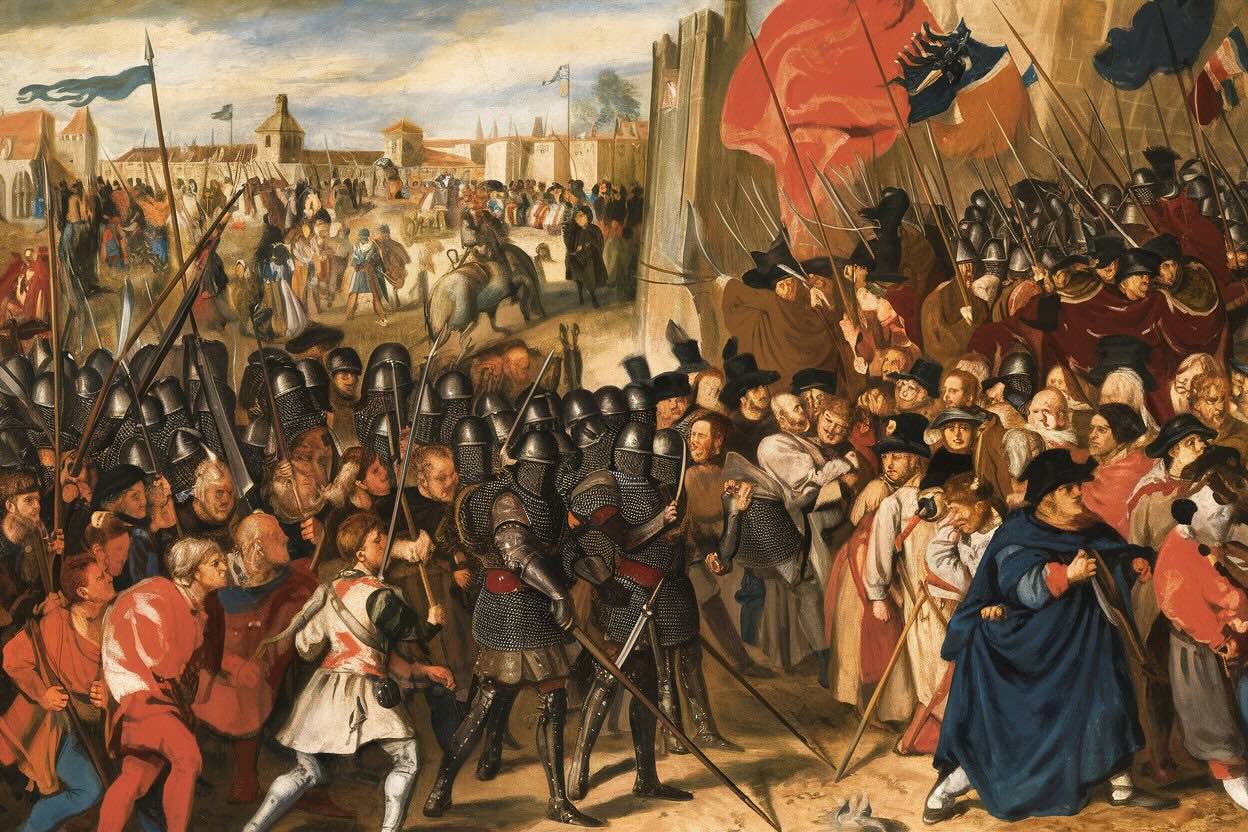
What was the 1487 Flemish Revolt? The 1487 Flemish Revolt was a significant uprising in the County of Flanders, part of modern-day Belgium. This revolt was driven by economic hardships, high taxes, and political tensions between the local nobility and the ruling Burgundian state. The common folk, tired of oppressive taxes and harsh living conditions, took up arms against their rulers. This conflict saw various battles, sieges, and political maneuvers, ultimately leading to a temporary change in power dynamics. Understanding this revolt helps us grasp the complex history of Flanders and the broader European political landscape during the late Middle Ages.
Key Takeaways:
- The 1487 Flemish Revolt was a major uprising against heavy taxes and economic hardships, leading to lasting impacts on Flanders, including centralization of power and cultural unity.
- The revolt sparked art and literature, inspired a sense of Flemish identity, and is remembered as a symbol of resistance, shaping the history and culture of Flanders.
The Beginning of the 1487 Flemish Revolt
The 1487 Flemish Revolt was a significant uprising in the history of Flanders. This conflict had far-reaching consequences for the region and its people. Let's dive into some intriguing facts about this historical event.
- The revolt began in response to heavy taxation imposed by Maximilian I of Austria.
- Maximilian I was the ruler of the Holy Roman Empire at the time.
- The taxes were meant to fund Maximilian's wars in Italy and against France.
- Many Flemish cities, including Ghent and Bruges, were heavily involved in the revolt.
- The revolt was also fueled by economic hardships faced by the Flemish people.
Key Figures in the Revolt
Several important figures played crucial roles in the 1487 Flemish Revolt. Their actions and decisions shaped the course of the conflict.
- Maximilian I was the primary antagonist from the perspective of the Flemish rebels.
- Philip of Cleves, a nobleman, emerged as a leader of the revolt.
- Philip of Cleves had previously served Maximilian but switched sides due to disagreements.
- The city of Ghent became a stronghold for the rebels under Philip's leadership.
- Maximilian's wife, Mary of Burgundy, had previously ruled Flanders before her death in 1482.
Major Battles and Events
The 1487 Flemish Revolt saw several significant battles and events that determined its outcome. These moments were pivotal in the struggle between the rebels and Maximilian's forces.
- The Battle of Westrozebeke in 1487 was a major conflict during the revolt.
- The rebels initially had some success, capturing several towns and cities.
- Maximilian's forces eventually regained control of key locations.
- The Siege of Ghent in 1487 was a turning point in the revolt.
- The siege ended with the surrender of the city to Maximilian's forces.
Impact on Flanders
The 1487 Flemish Revolt had lasting effects on the region of Flanders. The aftermath of the conflict brought about significant changes.
- The revolt led to increased centralization of power under Maximilian.
- Many Flemish cities lost their autonomy as a result of the revolt.
- The economic impact of the revolt was severe, with many towns suffering damage.
- Trade in the region was disrupted, affecting the livelihoods of many people.
- The revolt also led to a decline in the influence of the Flemish nobility.
Cultural and Social Consequences
Beyond the political and economic impacts, the 1487 Flemish Revolt also had cultural and social consequences for the people of Flanders.
- The revolt inspired various works of art and literature in the region.
- Songs and poems were written to commemorate the bravery of the rebels.
- The conflict also led to a sense of Flemish identity and unity.
- Social tensions between different classes in Flanders were exacerbated by the revolt.
- The revolt highlighted the growing discontent with foreign rule in the region.
Legacy of the 1487 Flemish Revolt
The legacy of the 1487 Flemish Revolt can still be felt today. This historical event has left an indelible mark on the history and culture of Flanders.
- The revolt is remembered as a symbol of resistance against oppression.
- Historians continue to study the revolt to understand its causes and consequences.
- The events of 1487 are often referenced in discussions about Flemish independence.
- Monuments and memorials have been erected to honor the participants of the revolt.
- The 1487 Flemish Revolt remains a significant chapter in the history of Flanders.
The Impact of the 1487 Flemish Revolt
The 1487 Flemish Revolt left a lasting mark on history. This uprising wasn't just a local skirmish; it shaped the political landscape of the region. The revolt highlighted the growing discontent among the Flemish people towards their rulers. It also showcased their desire for more autonomy and fairer treatment.
The aftermath saw significant changes. The ruling powers had to reconsider their approach to governance, leading to more negotiations and concessions. This period of unrest also paved the way for future movements seeking greater rights and freedoms.
Understanding the 1487 Flemish Revolt gives us insight into the complexities of medieval politics and the enduring spirit of those who fought for change. It serves as a reminder of the power of collective action and the importance of addressing the needs and grievances of the people.
Frequently Asked Questions
Was this page helpful?
Our commitment to delivering trustworthy and engaging content is at the heart of what we do. Each fact on our site is contributed by real users like you, bringing a wealth of diverse insights and information. To ensure the highest standards of accuracy and reliability, our dedicated editors meticulously review each submission. This process guarantees that the facts we share are not only fascinating but also credible. Trust in our commitment to quality and authenticity as you explore and learn with us.
